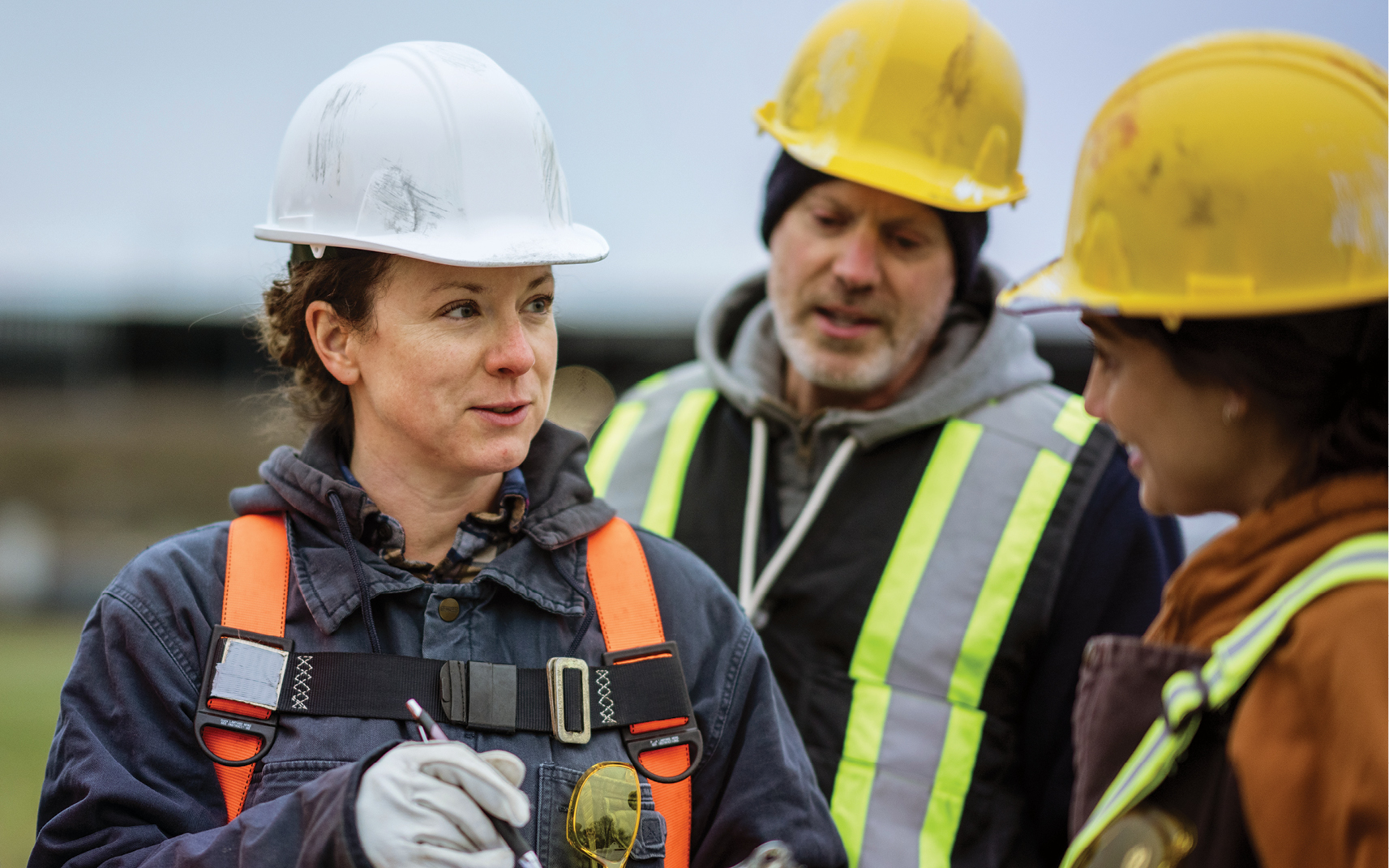Four industry experts share their perspectives about construction industry issues, such as labor shortages and safety, and what’s being done to address them.
There is no shortage of challenges facing the construction industry. Some might suggest that the last five years have been the most difficult in recent memory due to the pandemic and its lingering effects.
Navigating Today’s Top Construction Challenges
Brian Turmail
Brian Turmail is the vice president of public affairs and workforce at The Associated General Contractors of America, based in Arlington, Virginia. He has more than 15 years of experience at AGC. This national trade association represents approximately 27,000 member firms.
What changes are coming for the construction industry?
The industry is on the front stages of one of the most significant transformations in the technology and equipment it uses. We’re at the brink of the more widespread introduction of artificial intelligence and machine learning into construction equipment.
What benefits will AI bring to the construction industry?
AI will automate more of the construction process. And that has real significant positive impacts on job site safety and really changes the construction tasks that workers would have on a job site. They’d spend more time programming and managing equipment as opposed to bent over a shovel or operating a jackhammer.
How is your organization helping to promote job opportunities in the construction industry?
Members have seen a 100% to 200% increase in the number of people applying for jobs through targeted digital advertising campaigns, which we’ve done in partnership with about a dozen of our chapters around the country.
Kelly Aust
Kelly Aust is a project manager with Skanska USA Building Inc., based in Portland, Oregon. She has more than 14 years of experience in construction. She is president-elect of the National Association of Women in Construction (NAWIC) and is active in her local chapter.
What can construction companies offer to retain employees?
There’s been a noticeable shift toward prioritizing psychological safety and mental health. Respectful workplace programs and flexible work solutions are crucial aspects of this shift. Employee resource groups are emerging as a response to this need. NAWIC offers valuable resources and opportunities for professional development, training and networking, particularly for women in the construction industry. Programs like these not only contribute to individual career growth but also help retain talent and promote diversity within the sector.
What’s it take for construction businesses to thrive today?
You can’t build anything without diversity. If there was only one trade on a job site, you couldn’t complete a project successfully. It takes people from every single trade all working together with a common purpose and end goal in mind. Leveraging diversity in construction not only fosters success in project delivery but also promotes a more inclusive and dynamic industry overall.
Zac Rogers
Zac Rogers is an associate professor of supply chain management in the College of Business at Colorado State University. Zac is on the team that creates the Logistics Managers’ Index, covering leading economic indicators for the transportation, warehousing and inventory industries.
What do you see coming for the construction industry and related industries?
Our future prediction, as of this most recent report, is that we will see a big pickup in transportation and warehousing. And that’s really going to be driven by a buildup of inventories on the upstream side and a continual fast turnover of inventories on the downstream side, all of which suggest a healthy consumer and a healthy economy in 2024.
What can contractors expect from transportation and warehouse/storage costs for the remainder of 2024?
Storage and transportation (logistics prices) are going to get more expensive. That doesn’t sound good, but the reason they’re going to go up is because everyone thinks we’re going to get a lot busier.
What’s a positive prediction for contractors in North America?
We have the CHIPS and Science Act, and some of that money is really starting to move now. We’re still at the very beginning of that money moving, by the way, but it’s starting to move more now with the incentives. And we’re seeing more warehouses being built to support manufacturing now than we are for e-commerce.
Editor’s note: The bipartisan CHIPS and Science Act of 2022 was signed into law to help revitalize domestic manufacturing, supply chains, and research and development.
Bridgette Williams
Bridgette Williams is the executive director of the Heavy Constructors Association of Greater Kansas City. She is the first African American and the first woman to serve in this type of position in the United States.
What’s one of the top issues facing contractors?
The No. 1 issue is a worker shortage. Everybody is facing a worker shortage. It is a shortage not only for workers at the project site (boots on the ground) but also for back-office workers like estimators, project managers, superintendents and accountants.
How are you all addressing that worker shortage?
We provide scholarships for students who want a future in construction. In addition, we participate in a lot of middle and high school career days, as well as serve on regional and local workforce boards that assist us in recruiting. Our goal is to get into as many middle and high schools as we can to expose younger people to the opportunity to come into construction once they graduate from high school.
How can we better promote safety on job sites?
Safety is a top priority for contractors. They regularly host safety seminars for their workforce. Additionally, safety is an integral part of our apprenticeship programs.
AI will automate more of the construction process.”Brian Turmail, Vice President of Public Affairs & Workforce, Associated General Contractors of America





